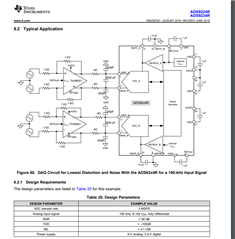Other Parts Discussed in Thread: THS4551, ADS9224R
Hi Team,
When changing from Rev I to Rev J, " Differential input voltage of Absolute Maximum Ratings" is changed from "±6V" to "±1.5V".
However, our customer designed using "±6 V". So it has a big impact.
-------
[Q1]
Is "±1.5V" a correct value, not a typo?
[Q2]
If "±1.5V" is the correct value, could you please let us know the reason for the change?
[Q3]
Is there a way to sort out "±1.5V" and "±6 V"?
For example, could you please let me know if it is possible to distinguish by TI label information?
(date code tec.)
[Q4]
They are designing for more than "±1.5V", is there a solution(workaround)?
-------
THS4130 datasheet
https://www.ti.com/lit/ds/symlink/ths4130.pdf


Regards,
Hide



